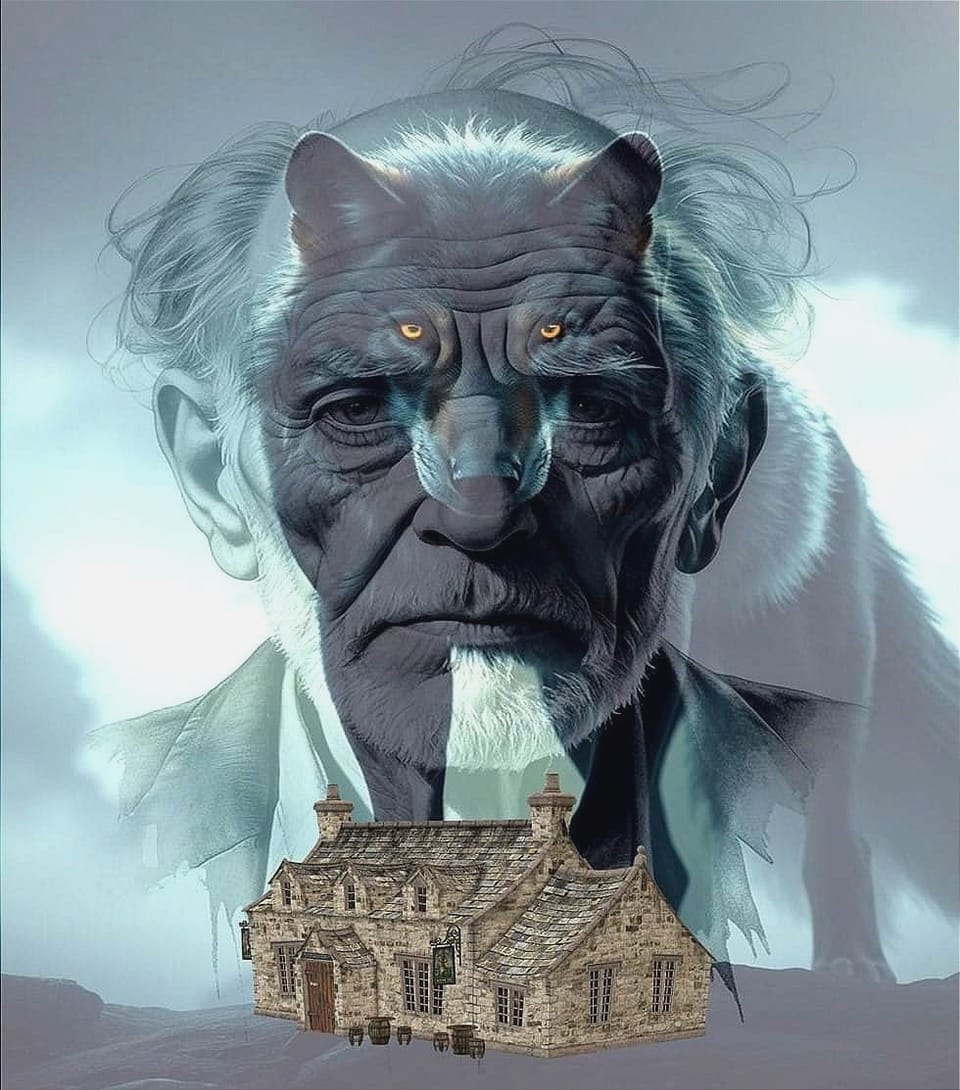Werewolves in the Infrastructure of Experience: On the Rise of Paranormal Narratives

A hideous creature jumped into rafters of thought, wreaking havoc within an observer’s mind, its form reflecting ancient evil as hatred, of a strange sort, emanated from its eyes.
As we know, humans explain the terrors of life through stories, tales told by firelight, warning children not to wander through dark woods, chastising adults who disregard traditional values and practices. In short, there are symbolic creatures who haunt society and inhabit our deepest fears, but there are real monsters, as well. As they say, most folktales have a basis in factual as well as emotional truth.
A staggering number of alleged encounters with werewolves can be found online, surfacing in chat forums, issuing from podcasters with traumatized audiences. Many of their listeners have seen--and been pursued by--drooling, amber-eyed creatures that appear to be both dogs and men, standing upright, walking, and possessing the keen intelligence we associate with humans. Now, I will digress for a moment; it is not my aim to discredit or substantiate any werewolf accounts in this essay, but merely to reflect on the significance of their telling.
For the record, I believe that people are indeed experiencing demonic entities, creatures who have physical as well as spiritual properties--and possess the most horrific intentions imaginable. Here, I reference my belief in the King James Bible as the authoritative word of God, Genesis 6 chronicling the issue of what we call "hybrids." Now, let's continue our reflection with some observations, a few discussion questions, and a brief story.
At the moment, I want to move the conversation on werewolves to a more speculative level, one that speaks to a wider range of experiences and is no less horrifying than woodland encounters with the unknown. With that in mind, let's consider a few initial observations.
1) Werewolves have been discussed for centuries, throughout the known world, and are currently being reported by witnesses in the United States.
2) Nearly without exception, people who see them are traumatized beyond measure, often reporting that their lives remain troubled for many years, long after the creatures have returned to the shadows of ancient forests.
3) As Bible prophecy continues to unfold, the demonic realm is moving closer to the physical world, upending the daily experiences of many human beings.
As for the great similarities that exist among witness accounts, much can be learned by conducting a bit of online research. I'll leave that adventure to you. For the moment, let's continue our reflection with a few discussion questions.
For starters, why do we find such a proliferation of "paranormal" narratives online? I speculate that it has to do with the more ordinary problems of life; urgent situations involving economic hardship; social unrest; and war raging in various places, multifarious events which might seem less traumatic in the face of werewolf encounters. In short, we can sometimes ease our fears about the visible world by shifting our attention to more mysterious things. Going a bit further, let's think about the issue of empiricism and evidence-based conclusions. In other words, can we trust modern science more than the realm of folklore?
Knowing that corporations routinely fund research studies to legitimize their products, essentially turning university professors into marketing professionals, makes "science" a bit suspect. Why trust research that changes with the whims of money and power? Why not explore ancient questions and wonder about the universe of things unseen?
In the final analysis, symbolic werewolves in the infrastructure of thought are terrifying, no less so than howling creatures of flesh and blood. The former have the ability to upend democratic freedoms as engineered crises and fake news proliferate. In no small way, disinformation and corporate agendas inculcate fear, invoking dark phantoms of the mind. However, this does not mean that strange creatures are strictly symbolic, as we have seen. With this in mind, I am reminded of a story.
The other day, while shopping for produce, I chatted with a grocery store employee who appeared to be in his late teens or early twenties. We spoke about strange things that exist in the New Mexico desert, where I am spending the summer months, and he told me about an incident that took place while he was at home.
On a hot night, the young man neglected to close his bedroom window and awoke to discover a crawling thing, of roughly five inches, that resembled a spider fused with a scorpion, moving in ways he called very unnatural and disturbing. “Wow, that’s creepy,” I said. “Yeah, totally.”
Unsure of what to do with the spider/scorpion thing in his room, the boy decided to tell his mother, believing that her parental wisdom would save the day. I hope she was prepared.
Continuing with his duties in the market, the young man recounted the time he had spent online examining photos of spider scorpions, none of which resembled the creature in his room. According to him, the thing that wiggled through his window one night was just "wrong." As our conversation ended, we both cringed for a moment in a sense of wonder and revulsion; it was clear that the boy had found something that, by most accounts, ought not to exist in the sands of New Mexico--although it does.
Perhaps we focus on unusual creatures all the more when the mundane horrors of life persist.